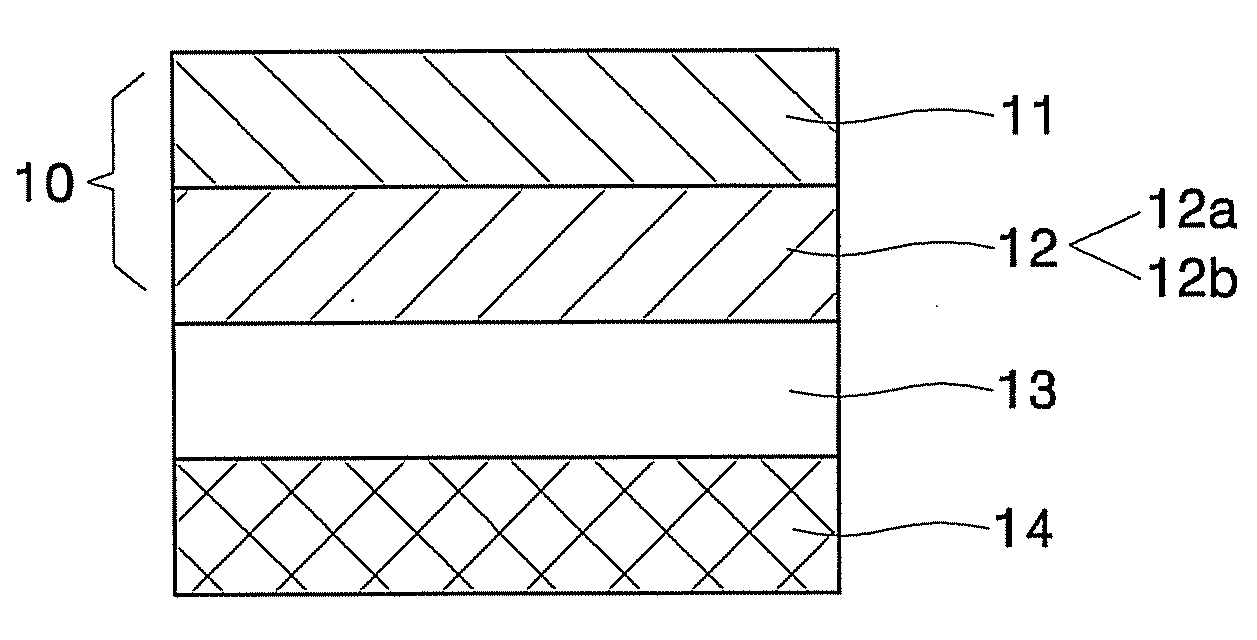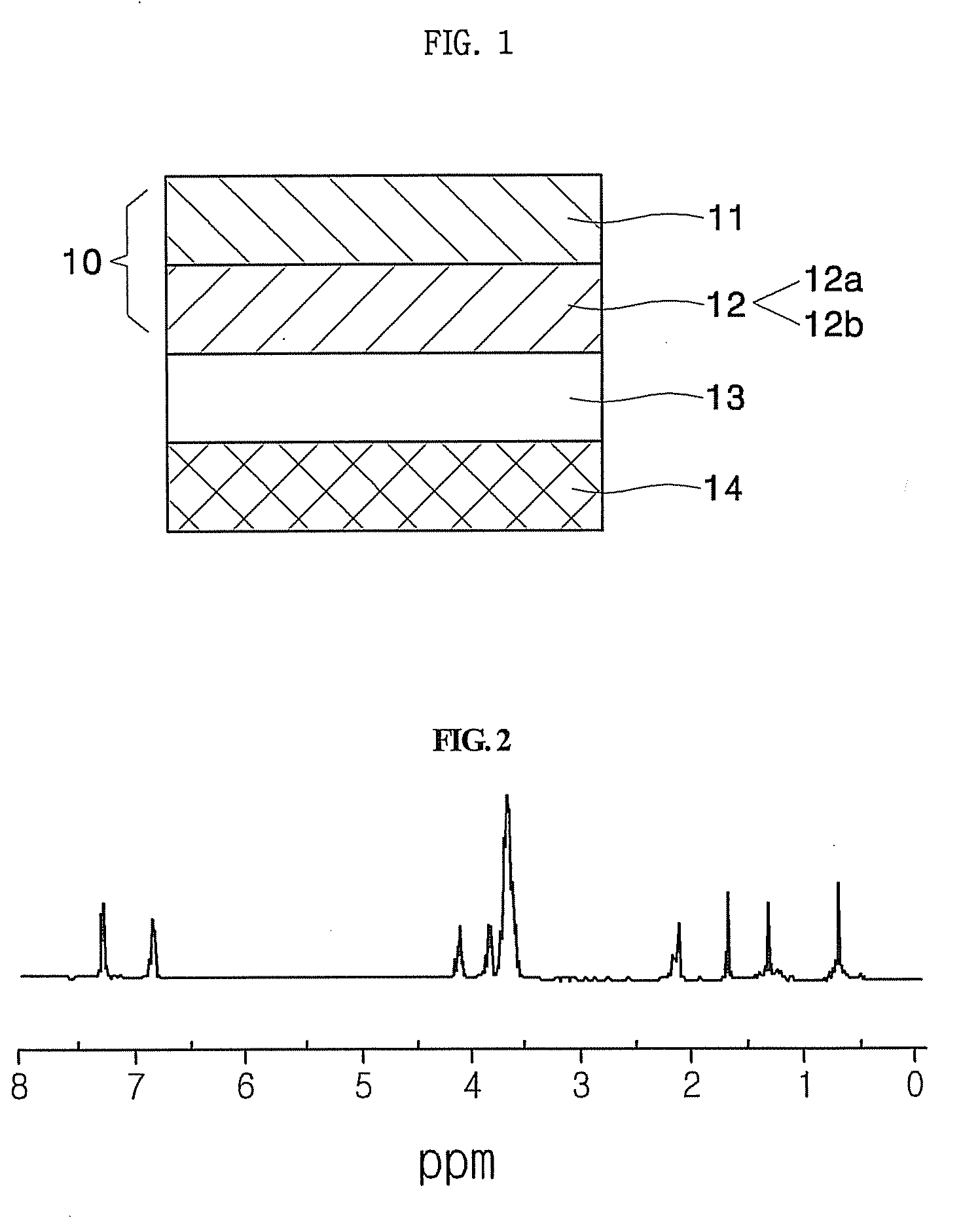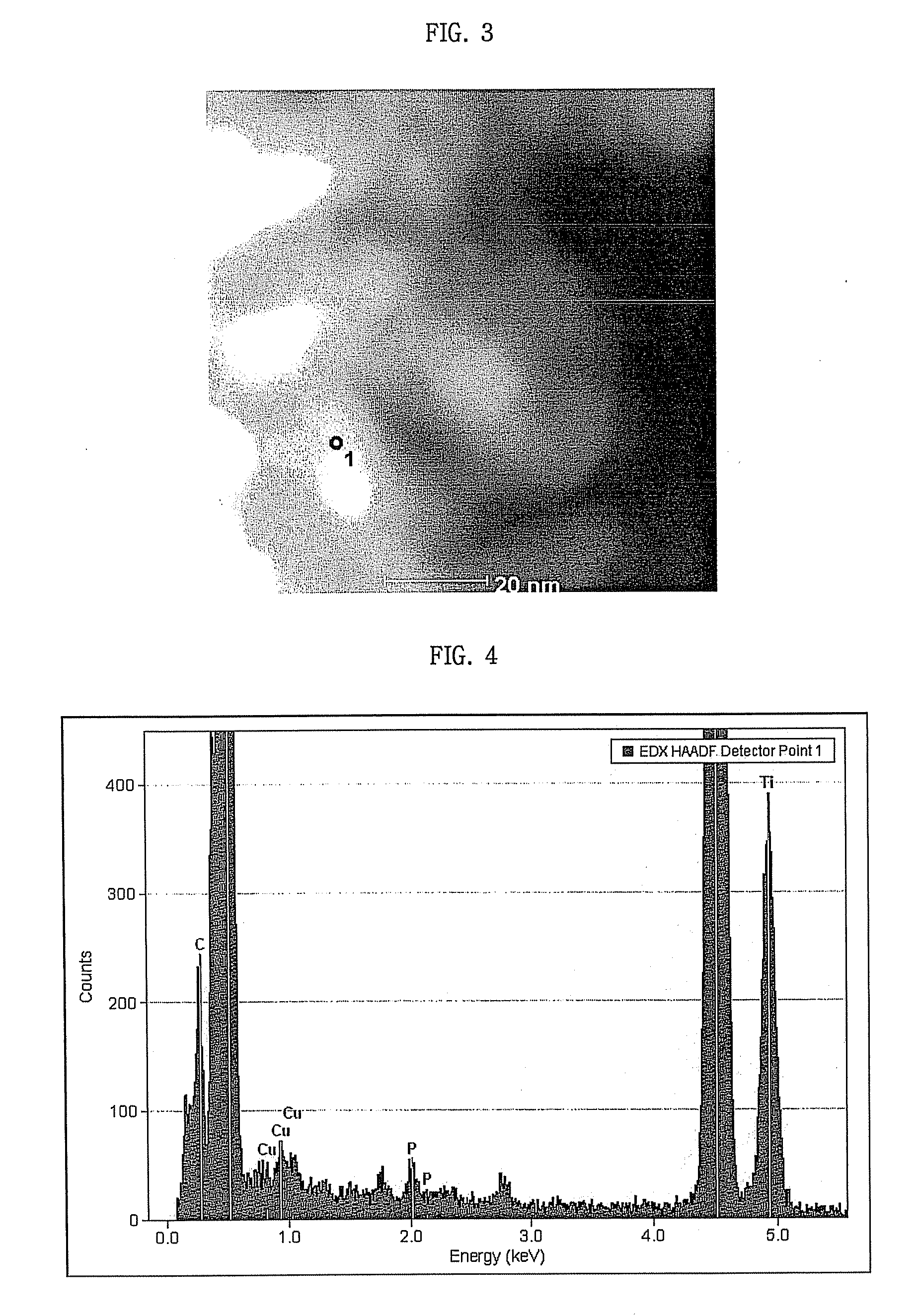Semiconductor electrode containing phosphate and solar cell using the same
a technology of solar cells and semiconductors, applied in the direction of semiconductor/solid-state device details, electrolytic capacitors, solid-state devices, etc., can solve the problems of reducing affecting the practical application and improvement of the cell efficiency, and affecting the efficiency of the cell. , to achieve the effect of improving the power conversion efficiency
- Summary
- Abstract
- Description
- Claims
- Application Information
AI Technical Summary
Benefits of technology
Problems solved by technology
Method used
Image
Examples
synthesis example 1
[0077]
[0078]The compound of Formula 10 was synthesized by the following Reaction Scheme 1:
[0079]Sodium hydride (50 mmol) was slowly added to a solution of TX-45™ (25 mmol, Sigma-Aldrich® Co., USA) in dry THF (50 mmol) at 25° C. The mixture was stirred for 2 hours. After dimethyl chlorophosphate (50 mmol) was added dropwise at 0° C. over 2 hours, the mixture was stirred under a stream of nitrogen gas at 25° C. for 12 hours. Subsequently, the reaction mixture was poured into ice water, followed by phase separation. The organic layer was separated and washed with an aqueous HCl solution and water. The product was added to a mixture of an aqueous 3M NaOH solution (100 ml) and methanol (10 ml). The resulting solution was refluxed for 12 hours. The reaction mixture was acidified to pH 2 using an aqueous HCl solution. Methylene chloride was added to provide phase separation. The organic layer so obtained was evaporated under reduced pressure to remove the solvents, giving the phosphate est...
example 1
[0080]A metal oxide paste composition was prepared as follows: In this example, commercially available titanium dioxide (nc-TiO2) (P25, Degussa®, 80% anatase, 20% rutile) was used as a metal oxide. The titanium dioxide powder was dried under vacuum at 130° C. for 24 hours to remove moisture and volatile organic substances contained therein before use. A mixed solvent of 70% (v / v) α-terpineol (Kanto Chemical Co., Japan) and 30% (v / v) butyl carbitol acetate (Kanto Chemical Co., Japan) was used as a solvent, and ethylcellulose (ETHOCEL®, standard 45, Dow Chemical Corp., USA) was used as a binder. The ethylcellulose was mixed with the mixed solvent of α-terpineol and butyl carbitol acetate in a silicone bath at 50° C. to prepare a binder solution. The binder and the solvent were mixed in a weight ratio of 3:5, respectively. To the binder solution was added TiO2 nanoparticles in an amount of 26 wt %, based on the total weight of solvent, binder, and nanoparticles, and thereafter, the com...
example 2
[0082]Platinum was coated by sputtering to a thickness of 1 μm on the surface of an ITO-coated transparent conductive glass substrate to form a counter electrode. The counter electrode and the semiconductor electrode produced in Example 1 were arranged in such a manner that the conducting surfaces of the two electrodes faced to each other. Subsequently, a spacer film (SURLYN®, available DuPont) having a thickness of 100 μm was interposed between the two electrodes, and the two electrodes were adhered to each other under a pressure of about 0.2 Megapascals (MPa) on a hot plate at about 120° C. An electrolytic solution was filled in a space formed between the two electrodes to complete fabrication of a dye-sensitized solar cell. At this time, as the electrolytic solution, an I3− / I− electrolytic solution of 0.6 moles of 1,2-dimethyl-3-octyl-imidazolium iodide, 0.2 moles of LiI, 0.04 moles of I2 and 0.2 moles of 4-tert-butyl-pyridine (“TBP”) in acetonitrile was used.
PUM
| Property | Measurement | Unit |
|---|---|---|
| particle diameter | aaaaa | aaaaa |
| particle diameter | aaaaa | aaaaa |
| particle diameter | aaaaa | aaaaa |
Abstract
Description
Claims
Application Information
 Login to View More
Login to View More - R&D
- Intellectual Property
- Life Sciences
- Materials
- Tech Scout
- Unparalleled Data Quality
- Higher Quality Content
- 60% Fewer Hallucinations
Browse by: Latest US Patents, China's latest patents, Technical Efficacy Thesaurus, Application Domain, Technology Topic, Popular Technical Reports.
© 2025 PatSnap. All rights reserved.Legal|Privacy policy|Modern Slavery Act Transparency Statement|Sitemap|About US| Contact US: help@patsnap.com



